The girl of the lamp
Here we are presenting you a traditional Waldorf tale, recounted exactly the way it is told in the classroom to our kindergarten students. We hope you enjoy it.
Here we are presenting you a traditional Waldorf tale, recounted exactly the way it is told in the classroom to our kindergarten students. We hope you enjoy it.
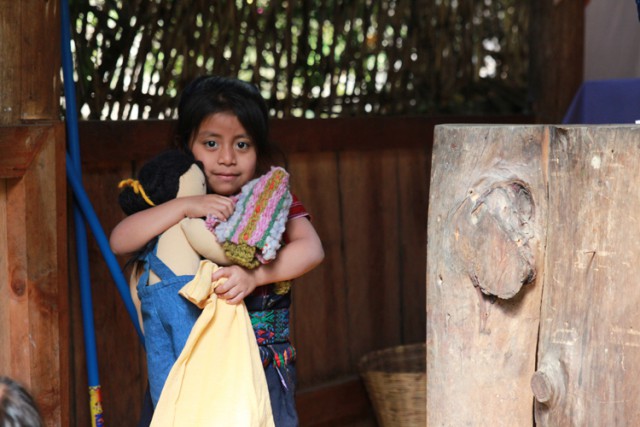
At 7:30 a.m. we start arriving: the teachers, that is. Maribel, Angelina, and Sandra, my colleagues in Escuela Caracol’s preprimary school, walk down from Barrio #1 and I arrive on bicycle from the neighboring town of Tzununa. Sandra and I begin the day in our open-air classroom sweeping out whatever leaves and dust have blown in during the night. The sounds of birdcalls and carpentry are our background noise. At 8:15 the school’s front door opens and the children start to trickle in. The kindergarteners have the longest walk, to the back corner of our school where our two kindergarten classrooms are nestled under matasano and jacaranda trees.
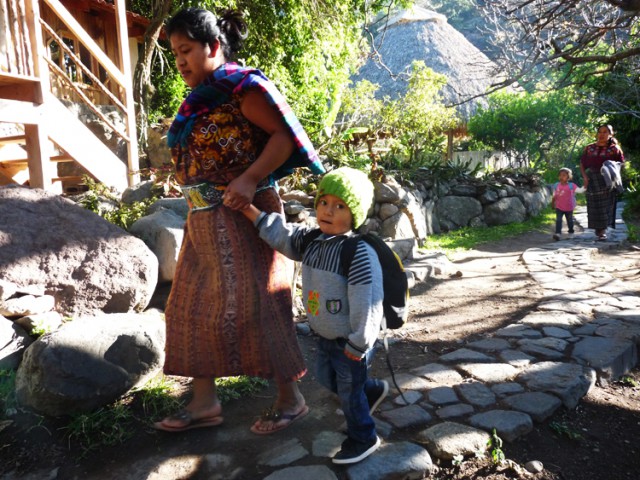
The first ones to arrive help us to set up the benches, wipe the tables down, and prepare fruit for our snack. Once all the children have arrived and class has begun at 8:30, we set out for a short walk around the school grounds. The first stop is our chicken house, where we leave our hens with fresh water, corn, and perhaps some fruit that we did not finish the day before. From there, we explore the gardens, say hello to the administrative staff in the office, or take in the primary school’s vegetable beds. On our way back to the classroom we stop at the stone spiral to sing our morning ronda, or circle. Our class is taught in Spanish, but during the ronda we are able to introduce the children to the sounds of English and Kaq’chikel (the local Maya language of our area) through songs and verses. Back in class it is storytime, drawing time, or watercolor time, depending on the day.
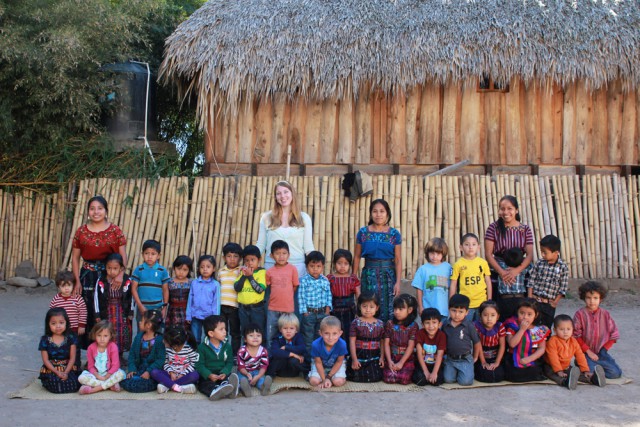
The stories we tell are simple nature tales or Grimm’s Brother’s fairy tales, depending on the group we have. For many of the children, it is the first time they hear a story told in such a manner. Stories like La Zanahoria ( The Carrot) or La Boda del Tio Perico, (Uncle Perico’s Wedding) which are short, repetitive, and silly are always favorites among all ages. When the puppets come out to accompany the stories, the children are thrilled! Once or twice a year, Sandra translates one of the simpler stories into Kaq’chikel and takes over the storytelling.
After storytime is free play. The children scatter into groups, some playing house with our dolls and cooking tortillas and eggs on the comal to sell or give to their classmates; others arranging the benches side-by-side to take trips across the lake in their lanchas. Castles and kingdoms are built on the floor from the large wooden blocks, entire worlds are created out of playsheets, flowers, and puppets. A few of the children get to be Sandra’s helpers, and go to the kitchen with her to prepare our daily snack. The children trickle into the kitchen during the first few minutes to snack on a piece of fruit, and then return to their play. Some help me indoors to wash the tables and benches of our class, to clean and sort the cotton that we harvested during our morning walks, or wash our class towels and sheets. When play time ends, we all clean up together, and then go to the pila to wash our hands and sit down for snack time.
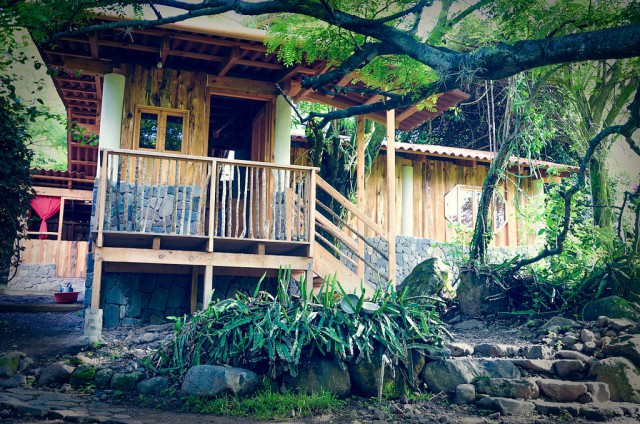
Snack time in our class is, of course, based around wholesome, nutritious foods, but it is also based on the traditional foods of our Guatemalan highlands region. We eat tortillas, tamalitos, beans, queso fresco. We drink lemongrass tea from our garden or pinol, a warm cornmeal based drink. When snack is done, we say thank-you in three languages: Spanish, Kaq’chikel, and English. Then it is washing up time: most of the children help Sandra to wash, dry, and put our dishes away, while a few stay inside to help me clear the table, sweep the floor, and fill cups up with drinking water to use when brushing our teeth.
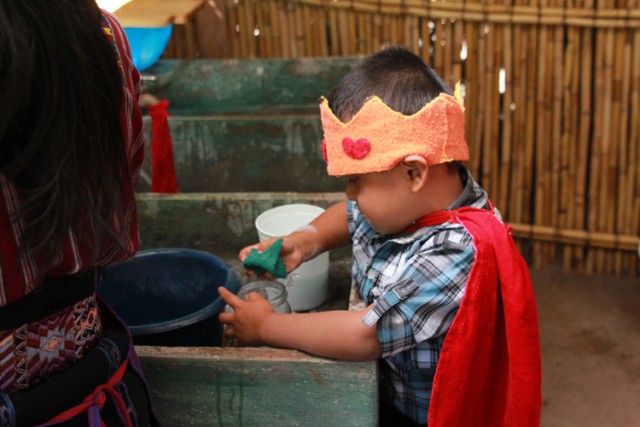
Once both the dishes and our teeth are clean, it is time to go play in our garden! The kids climb as high as they dare in the jocote trees, or use long caña sticks to knock ripe jocote fruits or achiote seed pods down from the trees. Others run around, walk across the balance beam, or search for ripe berries in the berry bramble. At the end of outdoor play, we all gather together again to sit in the shade of the jocote tree and sing our good-bye song, while the parents slowly arrive into our garden to take their children home. The morning is over, and the children leave with hugs and cries of “Adios seño!”
—————
A Day in the Life of the Waldorf Kindergarten was written by one of Escuela Caracol’s kindergarten teachers: Colleen Donovan. Colleen is from the United States, and has been living in Guatemala since 2008 and working in Escuela Caracol since 2012. She is enrolled in the Early Childhood Education program at Sunbridge Institute in New York. The other kindergarten teachers at Escuela Caracol are: Maribel Mendoza, Sandra Perez, and Angelina Quiacain and they are all from San Marcos la Laguna, a highlands town on Lake Atitlán in Guatemala. Maribel Mendoza graduated from the Waldorf Early Childhood Education program in Cuernavaca, Mexico in 2014 and is the first indigenous Maya to earn Waldorf teaching certification. Sandra Perez is also working towards completing her certification through the Cuernavaca program.
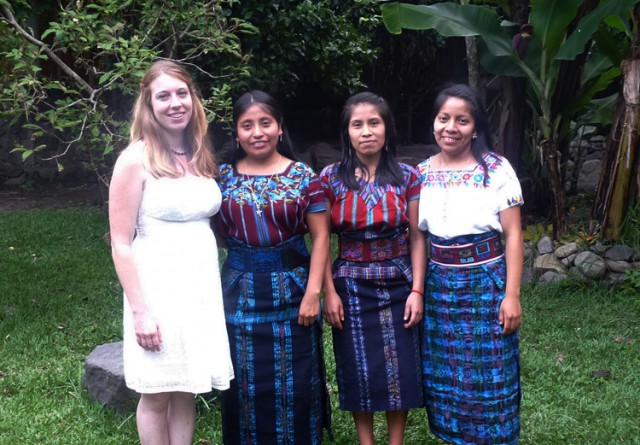 (in photo from left to right: Colleen Donovan, Maribel Mendoza, Angelina Quiacaín and Sandra Pérez)
(in photo from left to right: Colleen Donovan, Maribel Mendoza, Angelina Quiacaín and Sandra Pérez)
About Escuela Caracol:
In a country still recovering from a 36 yearlong civil war that ended less than two decades ago, there is a great need for our healing and comprehensive educational community. Our commitment to building intercultural solidarity is serving an increasing number of families in the Lake Atitlan region of Guatemala and is becoming a solid model of empowerment for the marginalized people in Central America.
Escuela Caracol was founded in 2007 by two Americans, Joshua and Courtney Wilson, in an area that has been inhabited by indigenous Maya for thousands of years. It is one of the poorest regions in Guatemala, with 80% living in poverty, 25% in extreme poverty and only 62% of the children making it to grade 6. Only 8.5% of Guatemalan youth pursue university education, and for women it is LESS than 1%.
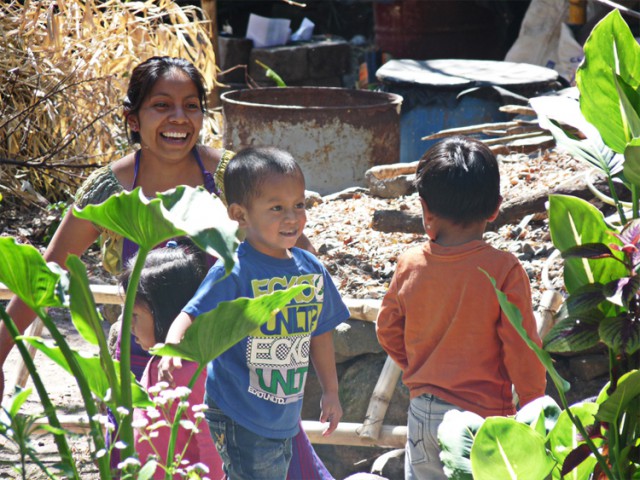
Waldorf education is a natural fit for this Guatemalan community where we teach children from Kindergarten through Grade 6 with a pedagogy that sprang from the intention of renewal in Europe following World War I. Based on the fundamental principles: freedom, equality and solidarity, creative expression, practical work, the natural environment and social harmony are part of each day at Caracol. Also local indigenous customs are celebrated and honored as a consistent inspiration for the emergence of a new culture. The children are motivated, confident and self-directed in their studies and in their relationships with their peers.
In a recent reflection about the founding impulse of Escuela Caracol Joshua Wilson offered that he and Courtney “were sociologists who studied the ills of modernization and global capitalism, and they longed for social justice and a thoroughgoing hope for a better world. We believed in the underlying goodness of the world, and we also saw a suffering world in need of healing. We desired to pass this on and plant a small seed of peace.” Joshua and Courtney are currently in the middle of a sabbatical year in California with two girls and new baby boy.
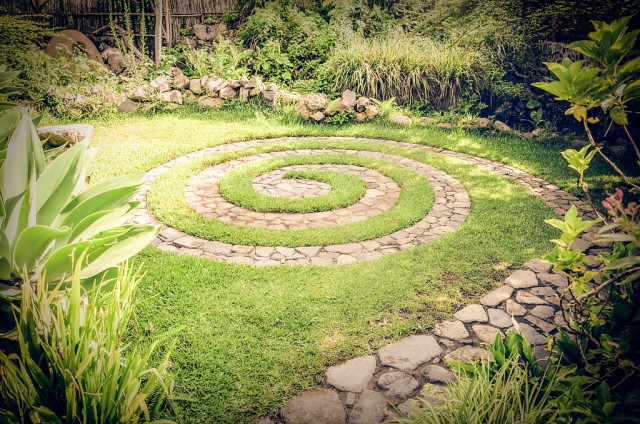
This year at Escuela Caracol, the combined 4th/5th grade class was made up of eight children, all from San Marcos and the neighboring villages of Lake Atitlán. Having the students come back each year bigger, healthier, and more curious than ever is testimony to their progress at Escuela Caracol.
In our first Math block we focused on fractions. First, we had a lot of hands-on activities to reinforce the concept of fractions. We moved on to manipulating fractions, expanding, reducing, and recognizing equivalent fractions.
Our second block focused on studying the Popol Vuh, the sacred book of the Mayan people. We took a field trip across the lake and up the mountain to visit the Grupo Cultural Sotz’il, a group of Kaq’chikel Mayan artists who interpret stories from their ancestors and perform them on stage to keep them alive. The children, inspired and in awe of what they saw, were eager to make masks and dance like the Sotz’il group. We wrote together and drew the stories of the Popol Vuh. Then we prepared our Class Play and presented it to the community.
In the second half of the year, the 4th and 5th graders at Escuela Caracol delved into Ancient History. They learned about the ancient civilizations of India, Persia, Mesopotamia and Egypt. As much as possible, they experienced these cultures through their senses and through rich images and stories. Drinking chai tea, drawing maps, building a Babylonian temple (Ziggurat) with clay bricks, and even getting wrapped with bed sheets as part of an imaginary mummification ceremony were some of the highlights. They started using fountain pens this year after making their own more “traditional” ones using bamboo. To conclude the year, the students experienced the study of Botany. They spent a lot of time outdoors observing the lush plant-life around them and the beautiful flowers which are in bloom at this time of the year (November-December).
This group of students relies on the support from our generous donors in the United States and Europe. Our costs are increasing and we’d like to make this opportunity available to more indigenous Mayan students. In order to do that we need your support! Sponsors are the heart of our school. Please consider sponsoring a child for $20/month for 2015 and ensure the continued opportunity for these beautiful children! In minutes you can make this gift a reality through by clicking here if you are living in the U.S., or clicking here if you are in Europe. Or you can make a one time gift of any amount. We are still in need of $13,000 to get through 2014. Thank you for your generous support!
The realization of this documentary comes at a defining moment in the history of Escuela Caracol. Joshua and Courtney Wilson, after founding and directing this project for seven years, left on sabbatical back to the United States. A new organizational structure with solid leadership in pedagogy, administration and development was implemented in 2014 and Escuela Caracol began the next phase of functional autonomy. Like an adolescent child stepping out on their own. To reflect on the past seven years and identify the extent of impact that has been made Neah Bay Douglas, Director of Development approached one of our teachers, Karla Olmedo, about beginning a project of social and educational research at Escuela Caracol. A systematization of experiences, with the opportunity to open the conversation to all members of the educational community to reflect on their own practices, achievements and the challenges they face. Ms. Olmedo accepted and has led a very in-depth research project that enumerates the high impact of the intercultural educational experiences happening among the Escuela Caracol community.
The systematization of experiences is a process of self-knowledge, reflection and critical interpretation from and about the practice, which is based on the reconstruction and management of objective and subjective factors involved in that experience.
The utilities that are found in systematization research are varied and include:
An educational institution can build a collective thought that is highly enriched by the contributions of the systematization that are made about their experiences, thereby strengthening the institutional work and boosting the personal work among the team of educators.
From this perspective, it is considered that social phenomena are historical, changing and contradictory and are a synthesis of multiple structural and cyclical factors and determinations; It is a concept that links theory and practice and does not separate object from subject knowledge.
The teachers are objects and subjects of knowledge and transformation. Our daily practice is replete with rich lessons to be learned and a continual evolution of self if the conditions are right to do so. Of course that runs the risk of making reflections uncritical and even justifying our work, but that is why we need a methodology that allows us to “objectify” and take a critical distance from our own experiences, without trying to override the richness of them.
The first systematization exercise consisted in gathering the stories of teachers, staff, and families representing each group. At this early stage a diagram showed us a very enlightening picture about the experience of Escuela Caracol for those who participate in it. Here we find that the central category of this diagram is “Intercultural Waldorf School”, anchored to the community of San Marcos La Laguna, and also the following subcategories emerged: Achievements, Challenges and Future Vision.
This initial exercise also made us aware of the need that the school has to give more weight to the voices of families in order to further understand the meaning of their participation in our educational community. Since one aspect to consider is the strengthening of community networks we had the idea of hosting the ‘Café Caracol’ based on the ‘World Café’ methodology. This community event significantly expanded the participation of the community of mothers and fathers in our process of systematization of experiences, and their voices were felt more deeply in our process of self-knowledge.
Although the systematization of experiences is a process that is continuing to run its course (which will culminate in additional materials that report the research findings), our team identified that at this intermediate point there was a need to create something to illustrate the path we walk collectively. Therefore we decided to create a short documentary, a perfect end to this first stage of research, an authentic presentation of our deepening reflection and impactful practice as an educational community.
For months we worked on developing a screenplay based on the categories and dimensions identified from the stories and interviews and from Café Caracol. During this time we found that we needed to appropriate the concept of interculturalism, one of the key concepts resulting from this methodological observation. Our project focuses on the concept “Intercultural Waldorf School”, and it is these same concepts that give us authenticity and relevance in this community. At Escuela Caracol the implementation of Waldorf pedagogy has a strong foundation with our teachers working towards certification and receiving continuous support from our Waldorf pedagogical director, Gloria Elena Londoño, but we wanted interculturality to be understood more deeply by all. To build a stronger understanding of interculturality in education, Genaro Vásquez came from Mexico to give a workshop aimed at members of our educational community, and open to other professionals in San Marcos La Laguna, Lake Atitlan and Guatemala. In this activity we identified how we approach and integrate this concept into our practice and how we will continue to address this part of our identity with conviction.
Jose Arteaga, a professional documentarian from Mexico, and Karla Olmedo filmed the documentary in November with active participation from school staff and families. It was an immense joy to see the cohesion of all the efforts of many months. During recording, besides being able to speak a common language, we were also able to express it effectively to the international community.
The process of systematization of experiences will continue because we truly believe this project is a seed for the education of children around the world. We believe in our work and the benefits we will provide by modeling the intercultural educational experience. Our dream is that something similar can be replicated in many communities around the world. A better world is possible, and we are the living example of this possibility.
We are so grateful for the support of our teachers, the students and families, our administration, Genero Vásquez, Jose Arteaga, and all of our fiscal sponsors. We are especially thankful for Joshua and Courtney Wilson for having the vision for Escuela Caracol and dedicating themselves so passionately for so many years.
To continue this opportunity in one of the poorest regions of Guatemala where 80% live in poverty we rely on support from sponsors throughout the world. Our fiscal stability depends on the continued support of these generous sponsors. Please consider becoming a sponsor of the Maya Student Fund to ensure that this dream is accessible. Donations can be made easily through our U.S. nonprofit sponsor at this link.
Please consider sharing this documentary with friends and family through email and facebook.
The 2014 school year was wonderful! We started the year with 19 children, a group that was very happy to see each other again, eager to learn, work, sing and play. Our first block of study was a language arts block using classic fables and form drawing. At the end of the first block we performed a class play “The Wake of Uncle Tiger”, from the oral tradition of South America. While the children memorized the play we also worked with the written language. The children enjoyed a lot throughout the creation of this play, it was very fun and rewarding!
Over the summer we had another exciting block we worked hard on: money. We took a field trip to the Nature Reserve across the lake in Panajachel (for some students it was their first time ever leaving their home village) where we brought math problems to life in our experiences and worked with real money. The last week of classes before the “mid-year break” we had a very enriching visit with volunteers from the Emerson Waldorf School in North Carolina, U.S.. These high school students led our children in numerous fun and artistic workshops and they also spent time painting and building new infrastructure at the school. It was a very big year with much learned in language arts, math, music and art.
Another school year has passed, and as is tradition, our whole educational community came to Escuela Caracol to celebrate the closing ceremony. This year we had some surprises that resulted in the best closure of these past 7 years.
The event began with an exhibition of the work of students that served as a reception for the families. After this time of delight and socializing we joined together at our beautiful palapa.
Children from every grade level, from the youngest in kindergarten through our seniors in sixth, showed some of the skills they have learned during the school year. As you would expect in a Waldorf school, the event was clearly marked by the presence of art, rhythm and creativity.
Following the presentation of each grade we premiered a recently shot documentary of Escuela Caracol, directed by Jose Arteaga, colleague of teacher Karla Olmedo. A much-anticipated work of art illustrating the findings of an intercultural research project that Ms. Olmedo has been leading over the last half of this year in the Escuela Caracol community. This systematization of experiences among our community, in addition to identifying our collective voice (through events like Cafe Caracol), has resulted in this documentary that is of impeccable quality and faithfully reflects our social impact in this kaqchikel community of Lake Atitlan. Soon we will share the final edition on our YouTube channel.
In closing to our end of the year ceremony, the magician D’Mond offered a fun show of magic and humor that delighted our children. Our ceremony, full of life, magic, art and fun, was the reflection of a memorable year for us all. Now comes the deserved vacation time, which will provide a time for renewal and preparation for a collective success in the next seven-year cycle beginning in January 2015. Thanks for supporting us throughout 2014!
On Sunday the 16th of November the Theatre Group of Escuela Caracol, composed of mothers, fathers and members of the school team, and directed by teacher Andrea Arrivillaga, represented Escuela Caracol in the comedy Ropa de Teatro (Theater Clothing), written by Laureate Guatemalan playwright Manuel Galich.
After two months of rehearsals and preparations of scenery and clothing, the actors and actresses treated us to a fun Sunday afternoon. The event, in addition to promoting art and culture in our community, served to raise funds for our school.
Given the success of community participation and the quality of the play, we are confident that we will soon be announcing a new production by our theater group. 2015 will certainly be a school year full of cultural events in Escuela Caracol!
Genaro Vasquez, a speaker and workshop leader on issues including intercultural education, agro-ecological sustainability and indigenous movements recently led a workshop at Escuela Caracol on Intercultural Education. This event was led in a participatory style and attracted teachers from other local schools to learn along with Escuela Caracol’s teachers, parents and guests from our community. Our time together allowed for a strengthening of our foundation to ensure continued impact in intercultural equity.
Originally from the rural community of Tlahuitoltepec Mixe, Oaxaca, Mexico, Mr. Vasquez graduated in Agro-ecology Engineering from the Universidad Autónoma of Chapingo in 2009 and subsequently completed a Masters degree in Agro-ecology and Sustainability at the University of Cordoba Spain. He recently completed an MA in Research and Development of Education at the Universidad Iberoamericana Mexico. He is co-founder and partner of the Higher Institute Intercultural Ayuuk, Oaxaca Mixe area where activities have focused on the accompanying processes of intercultural education and agro-ecological farming.
Thanks to Genaro Vasquez for his support and for moving us towards a real, consistent and efficient intercultural education for our entire educational community. We hope that he will honor us with a visit again!
Biodynamics is a spiritual-ethical-ecological approach to agriculture, food production and nutrition. Today, the biodynamic movement encompasses thousands of successful gardens, farms, vineyards and agricultural operations of all kinds and sizes on all continents, in a wide variety of ecological and economic settings.
In this course you will learn:
• Scientific and Philosophical Foundations of BDA
• The Rhythms of Nature and the Cosmos
• Soil Revitalization
• Seeds
• Composting and Biodynamic Preparations
• Medicine for Men and Animals
• Artistic Activities and Field Practice
 I am a trained Waldorf teacher with 20 years of teaching experience. I’ve started the now big Vancouver Waldorf School in Canada. I was involved in the start of the Biodynamic Society in British Columbia, Canada. I am making all Bio-Dynamic Preparations and I am trying to understand the world of the Devas, Nature Spirits, Gnomes, Undines, Sylphs and Salamanders, entities beyond the mere physical that need to be nourished. I’m running my own farm and community.
I am a trained Waldorf teacher with 20 years of teaching experience. I’ve started the now big Vancouver Waldorf School in Canada. I was involved in the start of the Biodynamic Society in British Columbia, Canada. I am making all Bio-Dynamic Preparations and I am trying to understand the world of the Devas, Nature Spirits, Gnomes, Undines, Sylphs and Salamanders, entities beyond the mere physical that need to be nourished. I’m running my own farm and community.
Date: November 7 and 8
Location: Escuela Caracol, San Marcos La Laguna, Lake Atitlan
The celebration of Archangel Saint Michael is traditionally celebrated as a religious holiday. In Waldorf schools it is also a time to consider reconnecting with the cosmic-divine. The same consideration occurs with all four festivals that make up the annual cycle: Saint Michael, Advent, Easter, Saint John, all linked to the seasons respectively: autumn, winter, spring, summer.
The Feast of St. Michael is preceded by the celebration of the autumn equinox, when the two ground poles are the same distance from the sun and light is perceived equally in both hemispheres. We can say it is a time of equilibrium for the earth. It is a time when day equals night.
In our atmosphere during this time of year meteoric iron falls to earth as rain of stars, it is a powerful healing force. In our blood iron is needed for strength. A person or small child with insufficient iron in their blood is anemic and lacking energy.
As teachers we help the children develop greater strength in many ways. Our students are encouraged to face challenges and enabled to overcome their own difficulties, overcome their fears, gain courage and confidence in themselves.
For us as teachers and parents this is a time that invites us to know our own limitations and fears, to find our own light and strength, to find our balance in life, to accompany our children with increasing success in this task that we have together to make them loving persons of good despite all the difficulties of the time.
Golden light is turning grey,
Mists begin to rule the day.
Bare the trees, their branches lift;
Clouds of dead leaves earthward drift.Through the field the farmer goes,
Seeds of ripened corn he sows;
Trusts the earth will hold it warm,
Shelter it from cold and harm.For he knows, that warmth and light
Live there, hidden from our sight;
And beneath a sheltering wing,
Deep below, new life will spring!Deep below, deep below, new life will spring!